In the dynamic landscape of professional services, efficient service delivery and client satisfaction reign paramount. Retainer Agreements stand as the testament of this symbiotic relationship, offering a framework for dependable, uninterrupted service.
Through the lens of this article, we delve into the nuances of these agreements, understanding their strategic importance in the business world, the ways in which they streamline professional relationships, and their role in fostering sustainable partnerships. This topic aims to illuminate the complexities and potential benefits of Retainer Agreements, paving the way for more effective, symbiotic business relationships.
Table of Contents
What is a Retainer Agreement?

A Retainer Agreement is a legal contract between a client and a professional that outlines the terms of a professional relationship. The agreement generally specifies the scope of work, fees, payment structure, and terms of the professional engagement. Under this arrangement, the client “retains” the professional’s services by paying a predetermined fee, often upfront, which acts as a reserve from which fees are subsequently drawn.
This type of agreement is common in industries that require ongoing or long-term services, such as law, consulting, and various creative fields like graphic design or copywriting. The retainer serves as a guarantee of access to the professional’s time and expertise, and it provides financial security for the professional. The specific terms of a Retainer Agreement can vary widely based on the nature of the work and the needs of the parties involved.
Retainer Agreement Templates
Retainer Agreement Templates are comprehensive legal documents designed to establish a professional relationship between a service provider and a client. These templates provide a clear framework for defining the terms and conditions of an ongoing engagement, ensuring that both parties have a solid understanding of their rights, responsibilities, and expectations.
A retainer agreement serves as a valuable tool for various professionals and businesses, including lawyers, consultants, freelancers, marketing agencies, and other service-based industries. It outlines the scope of work, payment terms, project milestones, and the duration of the engagement, among other essential aspects.
Who Needs a Retainer Agreement?
A Retainer Agreement can be beneficial in a variety of professional contexts. The following groups often make use of such agreements:
Lawyers and their clients: Legal matters often span long periods of time and require substantial work. Lawyers might ask clients to pay a retainer fee upfront as a commitment to their case.
Consultants and clients: Consultancy work, especially in fields such as business strategy, marketing, and HR, often spans several months or even years. Retainer Agreements help both parties understand their commitment to the project.
Freelance professionals and their clients: Freelance designers, writers, developers, and other professionals may use Retainer Agreements to ensure a consistent stream of work and income, while clients benefit from having ready access to these professionals’ services.
Public relations and advertising agencies: These agencies often work on long-term projects for their clients and a Retainer Agreement can provide a clear framework for the services to be provided, including the scope of work and payment details.
Coaches and their clients: This can include various types of coaching such as executive coaching, personal coaching, or athletic coaching. The coach will be available for a specified amount of time or number of sessions, paid for in advance.
Accountants and their clients: For businesses that need ongoing accounting services, a Retainer Agreement can clarify the terms of the engagement.
Types of retainer agreements
Retainer Agreements come in a variety of forms, each with their own specifics, to suit different industries and client needs. Here are several types of retainer agreements:
General Retainer
Under this agreement, a client pays a professional to be available to work when needed, rather than for a specific task or project. This is common in the legal profession where an attorney may be on-call to advise a client as needed. The retainer is usually a flat fee paid periodically, such as monthly or annually, and does not count towards any future services. Instead, it is considered earned income by the professional for their availability.
Special or Specific Retainer
This type of agreement involves the client paying in advance for a specific task or project. Once the task is completed or the retainer is used up, the agreement ends unless renewed. This is typically used for clearly defined projects or tasks that have a finite timeline.
Evergreen Retainer
In an evergreen retainer agreement, the client keeps a retainer balance with the service provider. The provider bills against this balance, and when it gets low, the client replenishes the retainer. This is common in ongoing business relationships, like those with law firms or consulting agencies.
Prepaid Hourly Retainer
This is where a client prepays for a set number of hours of the professional’s time. This retainer is then depleted as the professional bills their time against it. If the hours are used up before the task or project is completed, the client may need to top up the retainer or pay additional fees.
Pay-as-you-go Retainer
In this type of agreement, the client pays a certain amount up front, but then also pays for each service or task as it is completed. The initial payment acts as a kind of security deposit, ensuring the professional’s availability and commitment to the client.
Contingency Retainer
Commonly used in the legal profession, a contingency retainer means the lawyer only gets paid if they win the case for the client. The payment is usually a percentage of the settlement or judgement. Although this is not a retainer in the traditional sense, it is a form of a retainer agreement.
The benefits of retainer agreements
Retainer Agreements offer a wealth of benefits for both the client and the professional involved, providing structure, stability, and clarity for the professional relationship.
For the Service Provider
Financial Predictability: One of the foremost advantages of a Retainer Agreement for service providers is the predictability of income it affords. Whether you’re a freelancer, a consultant, or an agency, inconsistent income can make financial planning challenging. With a retainer, you have a reliable source of income each month, providing some stability in your earnings. This financial predictability allows you to manage your budget, plan for the future, and invest in your business growth with greater confidence.
Better Time Management: Another significant advantage is improved time management. Knowing you have a guaranteed client allows you to schedule your workload effectively. It eliminates time that could be spent searching for new clients or working on one-off projects, enabling you to focus on the task at hand.
Deep Client Relationship: Retainer Agreements usually represent a long-term commitment, which allows for the development of a deep, meaningful relationship with the client. As you work with a client over an extended period, you get a comprehensive understanding of their needs, goals, and preferences, which can result in more effective and personalized service. This strong relationship also enhances the potential for referrals, adding to your business growth.
For the Client
Guaranteed Access and Faster Turnarounds: With a Retainer Agreement, clients have secured access to the services they need. This means they can usually expect faster turnaround times as service providers prioritize retained clients. This is especially beneficial in industries where time is of the essence, such as law or public relations.
Cost Efficiency: Retainer Agreements can be cost-effective for clients who require ongoing services. Given the volume and duration of work, service providers often offer their services at a lower rate compared to individual projects. Clients also benefit from not having to spend resources searching for, vetting, and negotiating with new professionals each time they need services.
Consistency in Service: With a Retainer Agreement, clients benefit from consistent, high-quality work from professionals who understand their business and industry. This consistency can lead to better project outcomes, as the professional is familiar with the client’s brand, objectives, and preferences.
Ease of Budgeting: Similar to service providers, clients also benefit from the financial predictability a retainer offers. They can budget for professional services knowing the cost in advance, which can simplify financial planning and management.
These benefits underscore the potential value of Retainer Agreements for both service providers and clients. However, as with any contractual relationship, it’s important for both parties to thoroughly understand and agree upon all terms and conditions of the agreement before proceeding.
Retainer Agreements & Contracts: Differences
While both retainers and contracts are legal agreements, they differ in their purpose, scope, and terms. Understanding these differences is crucial when entering into a professional relationship.
Retainer Agreements
A Retainer Agreement is a specific type of contract where a client agrees to pay a professional or a service provider a retainer fee for securing their time and services over a specified period. This is common in industries that require ongoing services, such as law, consultancy, and creative fields like design or writing.
A Retainer Agreement essentially puts a client ‘in line’ for the services they need, often giving them priority over non-retainer clients. It also provides financial security for the service provider by guaranteeing a certain amount of income for a specific period.
Here are some of the key features of Retainer Agreements:
Commitment of time and resources: A Retainer Agreement commits the professional to reserve a certain amount of their time for the client. This guarantees the client’s access to the professional’s services.
Payment Structure: In Retainer Agreements, a client usually pays a set amount upfront (the retainer fee) to the service provider. This fee is then used up as the professional provides services to the client.
Long-Term: Retainer Agreements are typically used for long-term relationships where the client needs access to the professional’s services over an extended period.
Scope of Work: Retainer Agreements should outline the scope of the work, including what services will be provided, how often, and the expected turnaround times.
General Contracts
A contract, in the broad sense, is a legally binding agreement between two or more parties. Contracts set out the terms and conditions of a business relationship and are used across industries for a wide range of purposes.
Contracts typically define the nature of the work to be done, the timeline for completion, the payment for the work, and the obligations of each party. Contracts can cover one-off projects, sales of goods, provision of services, employment terms, and much more.
Here are some of the key features of general contracts:
Specific Projects or Tasks: Contracts often cover a specific project or task. Once that task or project is complete, the contract has been fulfilled.
Payment upon Completion: In many contracts, payment is made upon completion of the work, or in stages as parts of the project are completed.
Short or Long Term: Contracts can be short-term for individual projects or long-term for ongoing relationships, but they don’t necessarily commit a professional’s time and resources like a retainer does.
Scope of Work: Like Retainer Agreements, contracts also outline the scope of the work, but they typically include more specific details about the task or project at hand.
In summary, while a Retainer Agreement is a type of contract, it is used specifically for ongoing services and typically involves an upfront payment to reserve a professional’s time and expertise. A general contract, on the other hand, can cover a wide variety of agreements, including specific projects or tasks, and usually involves payment upon completion of the work. Both types of agreements have their place, and the choice between the two often depends on the nature of the work and the preferences of the parties involved. As always, it’s important for all parties to understand the terms and conditions of any agreement before signing.
Fees in retainer agreements
Retainer fees in a Retainer Agreement constitute the core compensation structure. The way these fees are determined and utilized can vary, but generally they represent a certain amount paid by the client to the professional or service provider in advance. Here’s a more detailed guide on the types of fees you might see in a Retainer Agreement:
Upfront Retainer Fee
This is the initial payment made by the client to the professional at the start of the agreement. It’s an advance payment that ensures the professional’s time and resources are set aside for the client. Depending on the specifics of the agreement, this fee might be applied against future services, or it may simply be a fee for the commitment of availability.
Recurring Retainer Fee
Some Retainer Agreements call for recurring payments, such as monthly or quarterly, to maintain the ongoing relationship. These recurring fees might be drawn down as services are provided, or they might represent a set fee for a certain level of service or number of hours per month.
Hourly Rate
In some cases, the retainer fee is set based on an agreed hourly rate for the professional’s services. The client pre-pays for a certain number of hours, and the professional then bills against this retainer as they work those hours. If the hours are used up before the agreement’s term is over, the client may need to replenish the retainer.
Project-Based Fee
For Retainer Agreements that center around specific projects, the retainer fee might be a flat rate agreed upon for the completion of the project. This is more common in industries like graphic design or consulting, where a specific output is expected.
Evergreen Retainer
An evergreen retainer is replenished to its original amount whenever it falls below a certain level. For example, if a client pays a $10,000 retainer and the professional’s fees have reduced it to $2,000, the client would then replenish the retainer back to $10,000. This ensures that the professional always has a certain amount of funds available for their services.
Contingency Fee
In some fields, like law, a contingency fee may be used. This is not a traditional retainer fee, but rather a payment that’s contingent on the outcome of a case. The lawyer only gets paid if they win the case, with the payment typically being a percentage of the settlement.
How to Create a Retainer Agreement
Creating a Retainer Agreement is a critical task that requires precision, legal knowledge, and a clear understanding of the professional relationship. Here’s a step-by-step guide on how to write a Retainer Agreement:
Step 1: Identify the Parties Involved
The first step in writing a Retainer Agreement is to clearly identify who the agreement is between. This usually includes the name of the professional or service provider and the client, their addresses, and contact details.
Example: “This Retainer Agreement is entered into between [Professional’s Name or Company’s Name], located at [address], hereinafter referred to as the ‘Provider’, and [Client’s Name or Company’s Name], located at [address], hereinafter referred to as the ‘Client’.”
Step 2: Describe the Services
Detail the specific services that the professional will provide. The services should be described in as much detail as possible to prevent misunderstandings. If applicable, indicate the frequency and delivery method of the service.
Example: “The Provider agrees to offer web design services to the Client, including website layout design, graphic design, and HTML/CSS coding. The Provider will deliver an initial design proposal within two weeks of the start of the agreement.”
Step 3: Specify the Retainer Fee
This section outlines the financial aspects of the agreement. State the amount of the retainer fee, how and when it will be paid, and how it will be used (e.g., will it be billed against, or is it a separate fee for retaining the professional’s services?). Include details about how additional expenses will be handled.
Example: “The Client agrees to pay a retainer fee of $5000 to the Provider. This fee will be billed against at an hourly rate of $100 for the services described above. The Client will replenish the retainer fee once it has been depleted by 50%.”
Step 4: Define the Term of the Agreement
State the duration of the agreement. It could be a specific time period (e.g., one year) or ongoing until terminated by either party. Include details about renewing the agreement and the procedure for termination.
Example: “This agreement shall commence on [start date] and shall continue for a period of one year unless otherwise terminated by either party with a 30-day written notice.”
Step 5: Address Confidentiality and Intellectual Property
This section is especially important if the professional will have access to sensitive information or will be creating intellectual property. Clearly define what information is confidential and how it should be treated. If applicable, specify who owns any intellectual property created.
Example: “All work product resulting from the Provider’s services shall be the sole property of the Client. The Provider agrees to maintain strict confidentiality of all information related to the Client’s business during and after the term of this agreement.”
Step 6: Include a Dispute Resolution Clause
Specify how disputes related to the agreement will be handled. This could include negotiation, mediation, or arbitration procedures, or it might state that disputes will be resolved in a certain jurisdiction’s courts.
Example: “Any disputes relating to this agreement will be resolved through mediation. If mediation is unsuccessful, the dispute will be submitted to binding arbitration in accordance with the rules of the American Arbitration Association.”
Step 7: Have the Agreement Reviewed
Before finalizing, it’s crucial to have the agreement reviewed by a legal professional to ensure it is legally sound and all parties are adequately protected.
Step 8: Signatures
The agreement should be signed and dated by all parties. Each party should receive a copy of the signed agreement for their records.
FAQs
Is a retainer fee refundable?
Whether a retainer fee is refundable depends on the terms of the Retainer Agreement. Some retainers are considered “earned upon receipt” and are non-refundable, even if the full amount is not used. Other retainers are refundable, meaning any unearned portion should be returned to the client at the end of the agreement.
How long does a Retainer Agreement last?
The duration of a Retainer Agreement depends on the specific terms agreed upon by the client and the professional. It could last for a specific period, such as six months or a year, or it could be ongoing until either party chooses to terminate the agreement.
Can a Retainer Agreement be terminated?
Yes, a Retainer Agreement can be terminated, usually by providing written notice as specified in the agreement’s terms. However, the refund of the retainer fee will depend on the agreement’s specific provisions.
Is a Retainer Agreement legally binding?
Yes, a Retainer Agreement is a legally binding contract. Once signed by all parties, it commits them to the terms outlined in the agreement.
How is a retainer fee calculated?
A retainer fee can be calculated in different ways, depending on the industry and the specific agreement. It could be based on an hourly rate for a certain number of hours, a flat fee for a project, or a monthly fee for ongoing services.
What happens if a retainer fee is not paid?
If a retainer fee is not paid, the professional may not begin work, or they may cease work if it’s an ongoing agreement. The consequences for non-payment should be specified in the Retainer Agreement.
Do Retainer Agreements need to be renewed?
The need to renew a Retainer Agreement depends on its terms. Some agreements may automatically renew unless otherwise terminated, while others may require explicit renewal once the term ends.
Can a Retainer Agreement be modified?
Yes, a Retainer Agreement can usually be modified with the consent of all parties involved. Any modifications should be documented in writing and added to the agreement as an amendment.
How are unused retainer fees handled?
How unused retainer fees are handled should be specified in the agreement. Some may be refunded to the client, while others may be considered “earned upon receipt” and are not refundable.

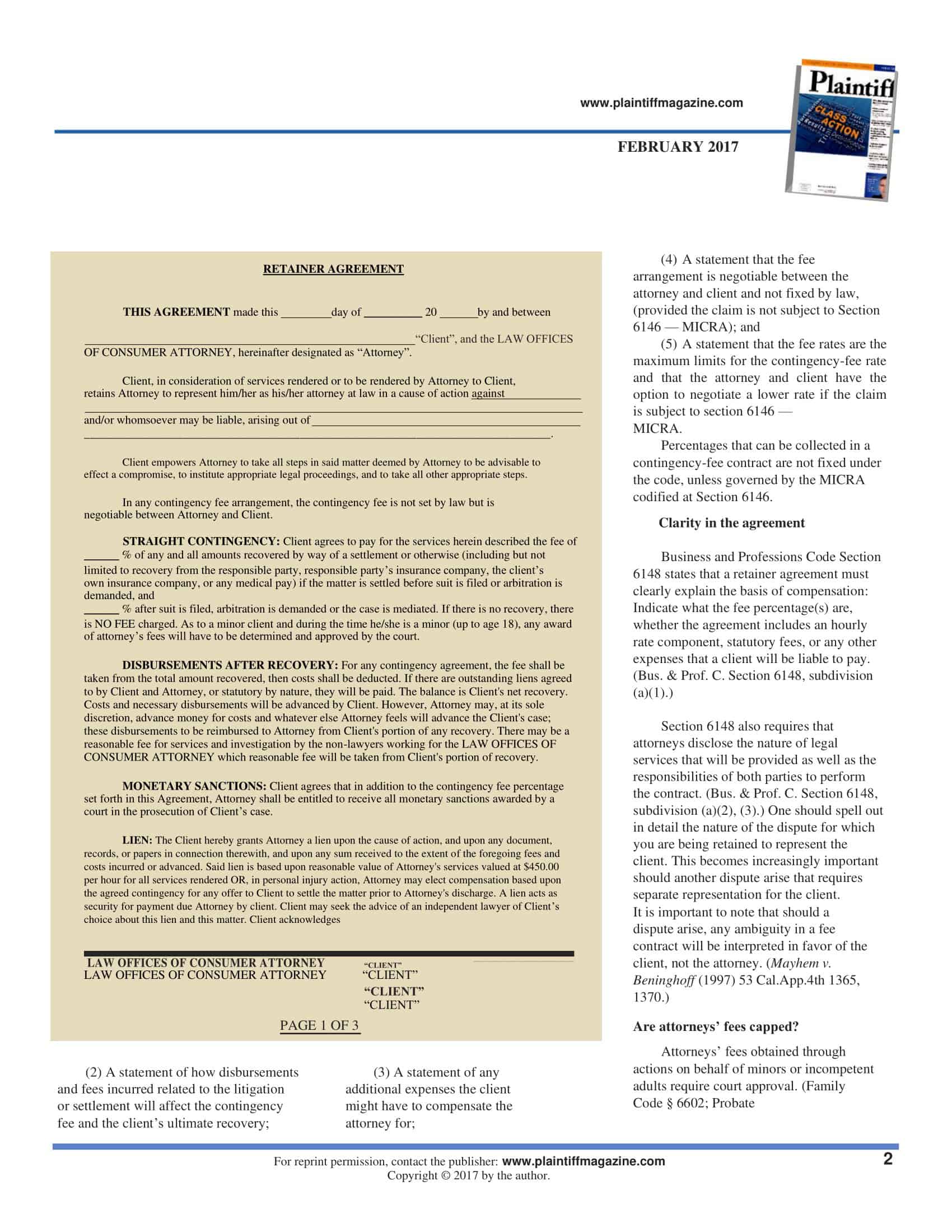
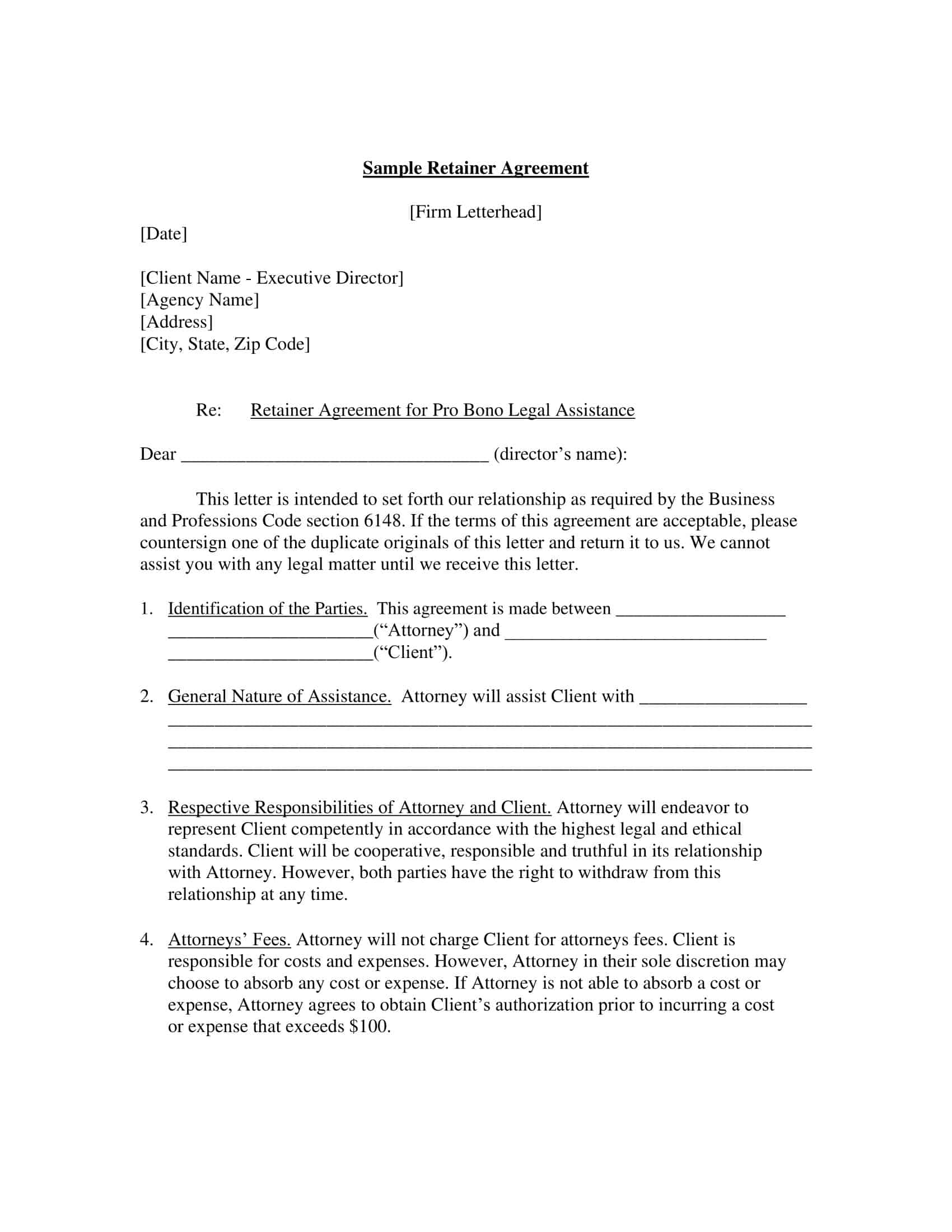

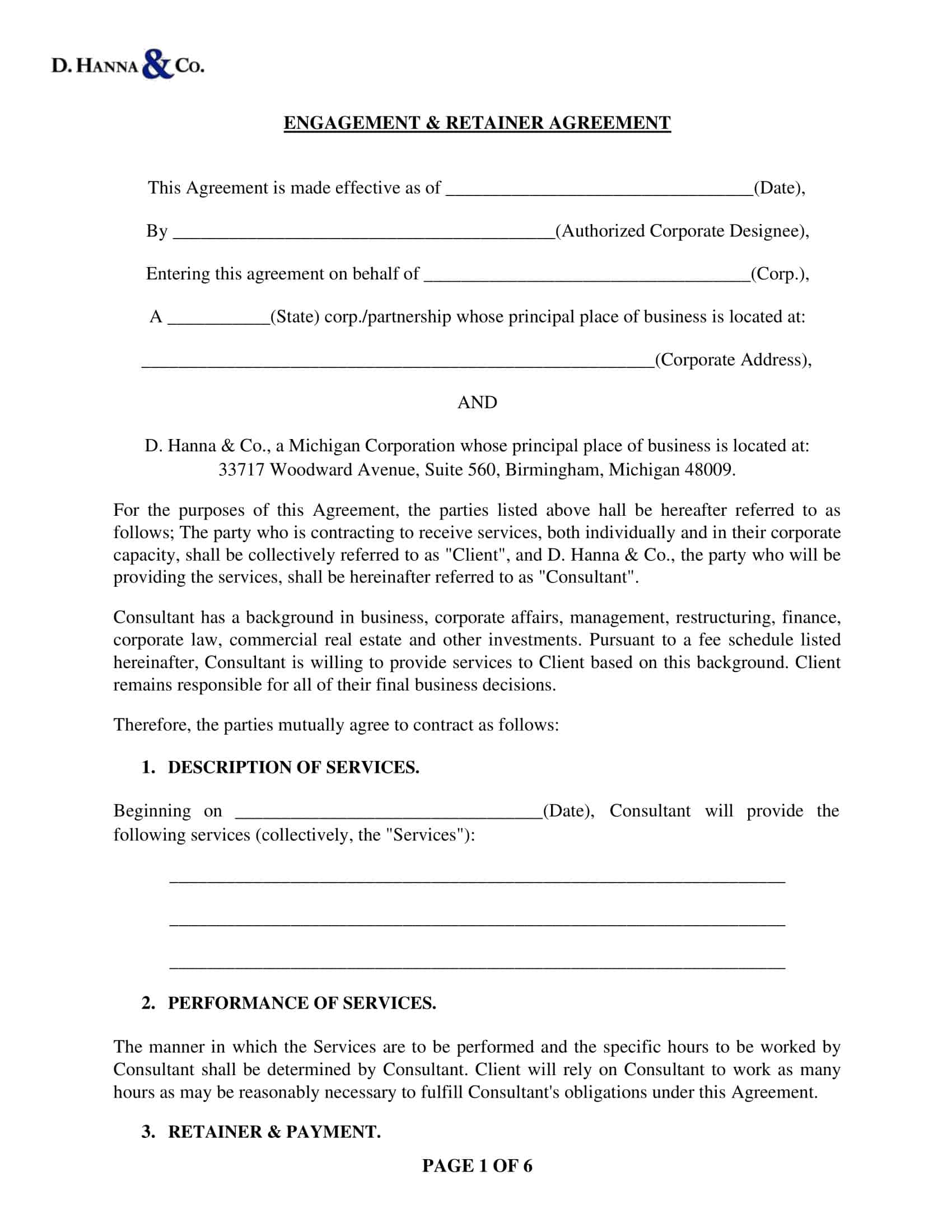
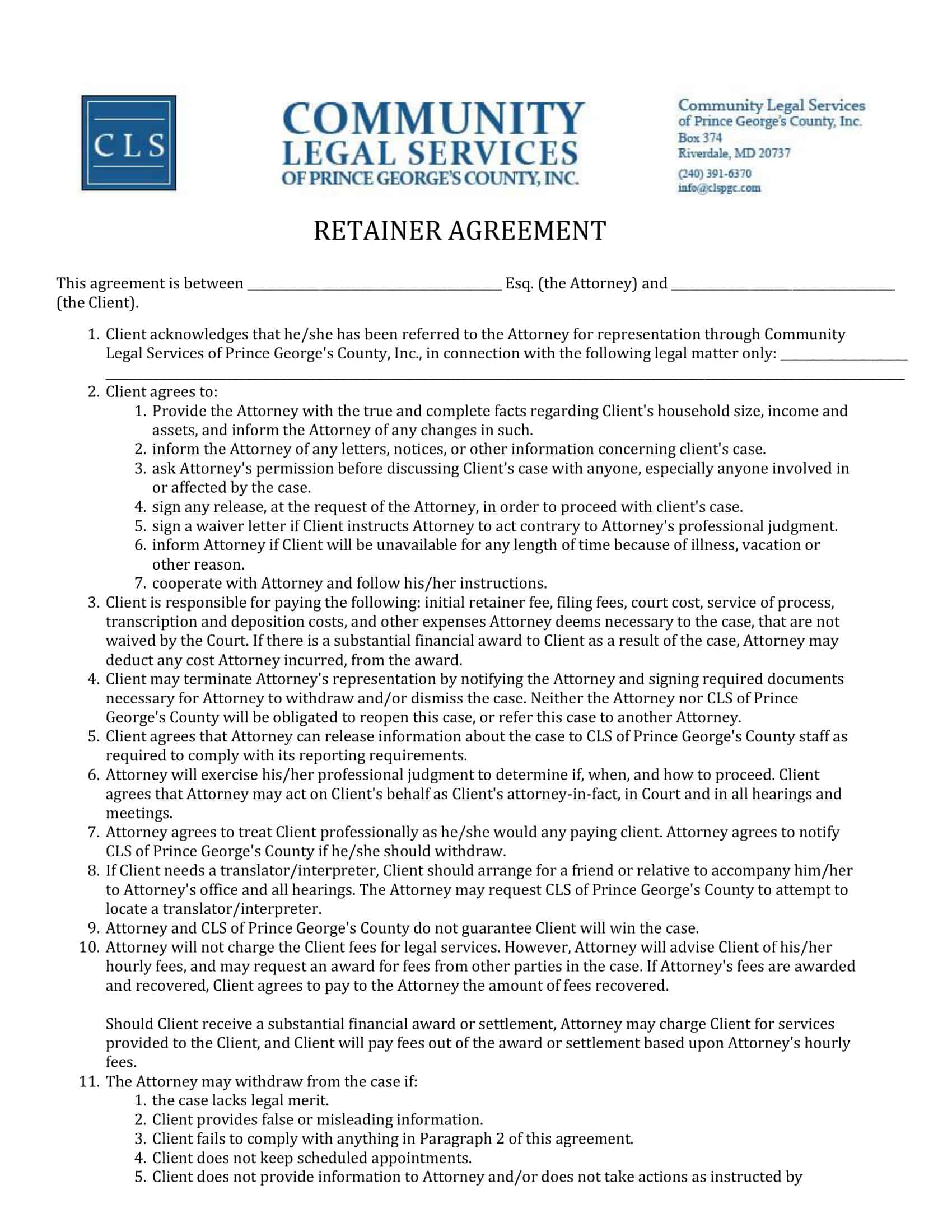










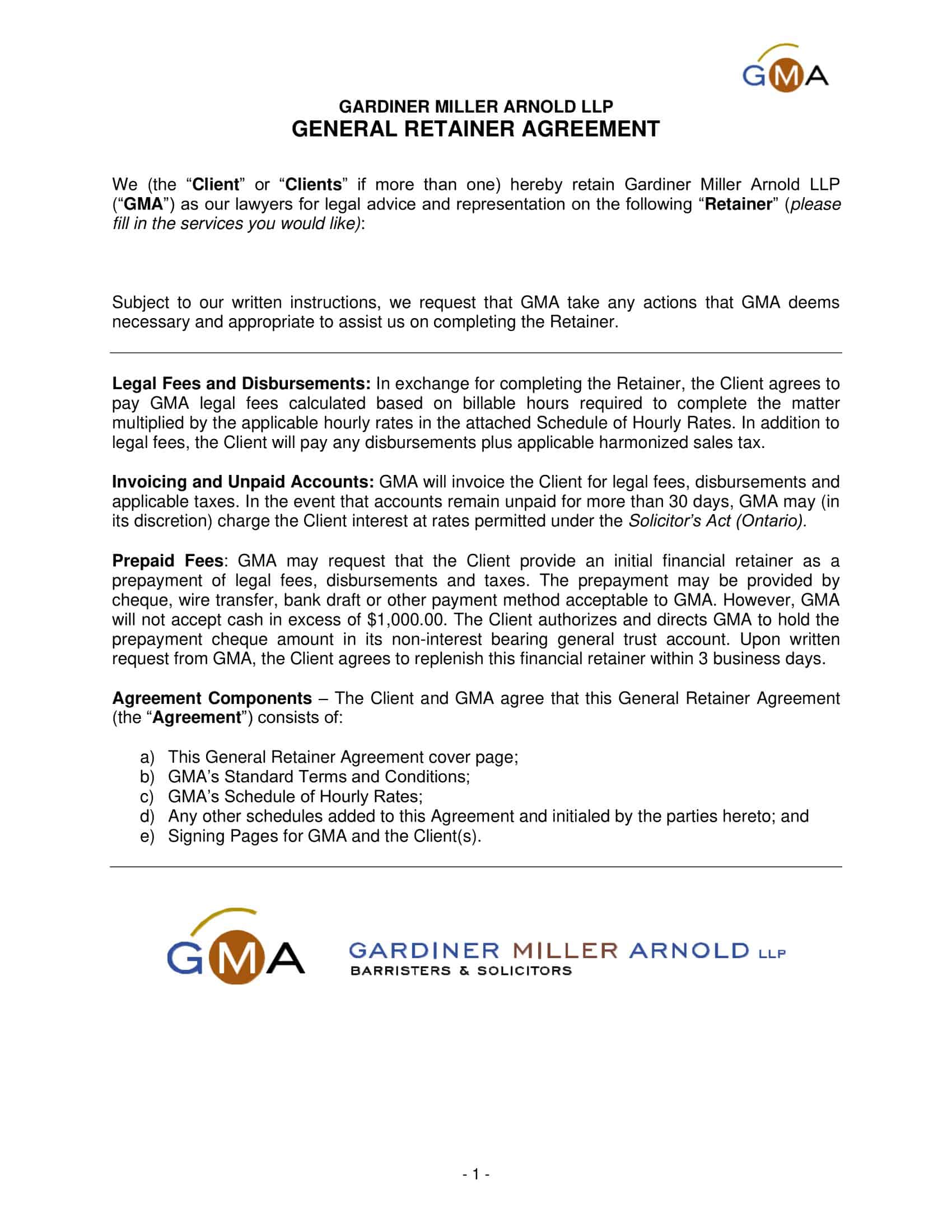





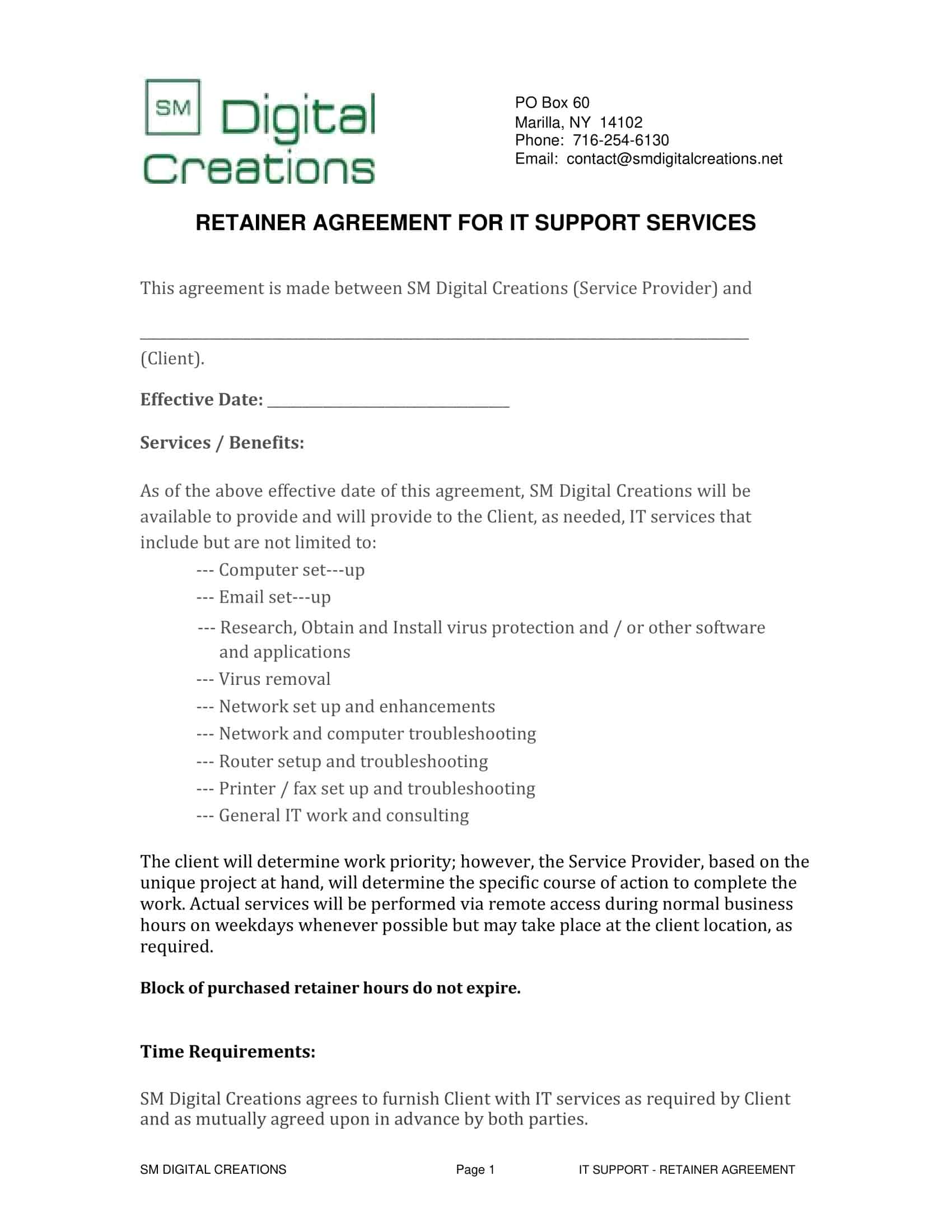

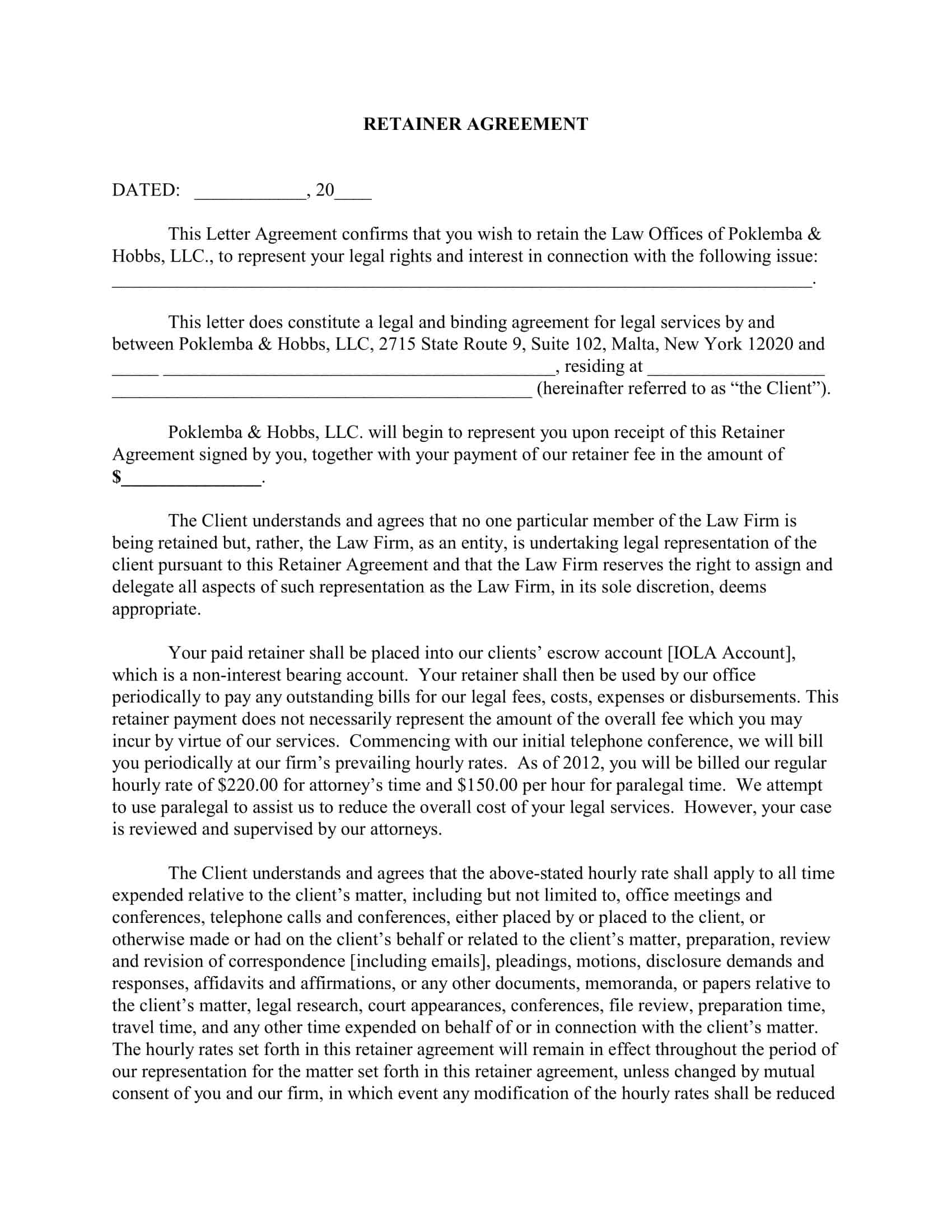
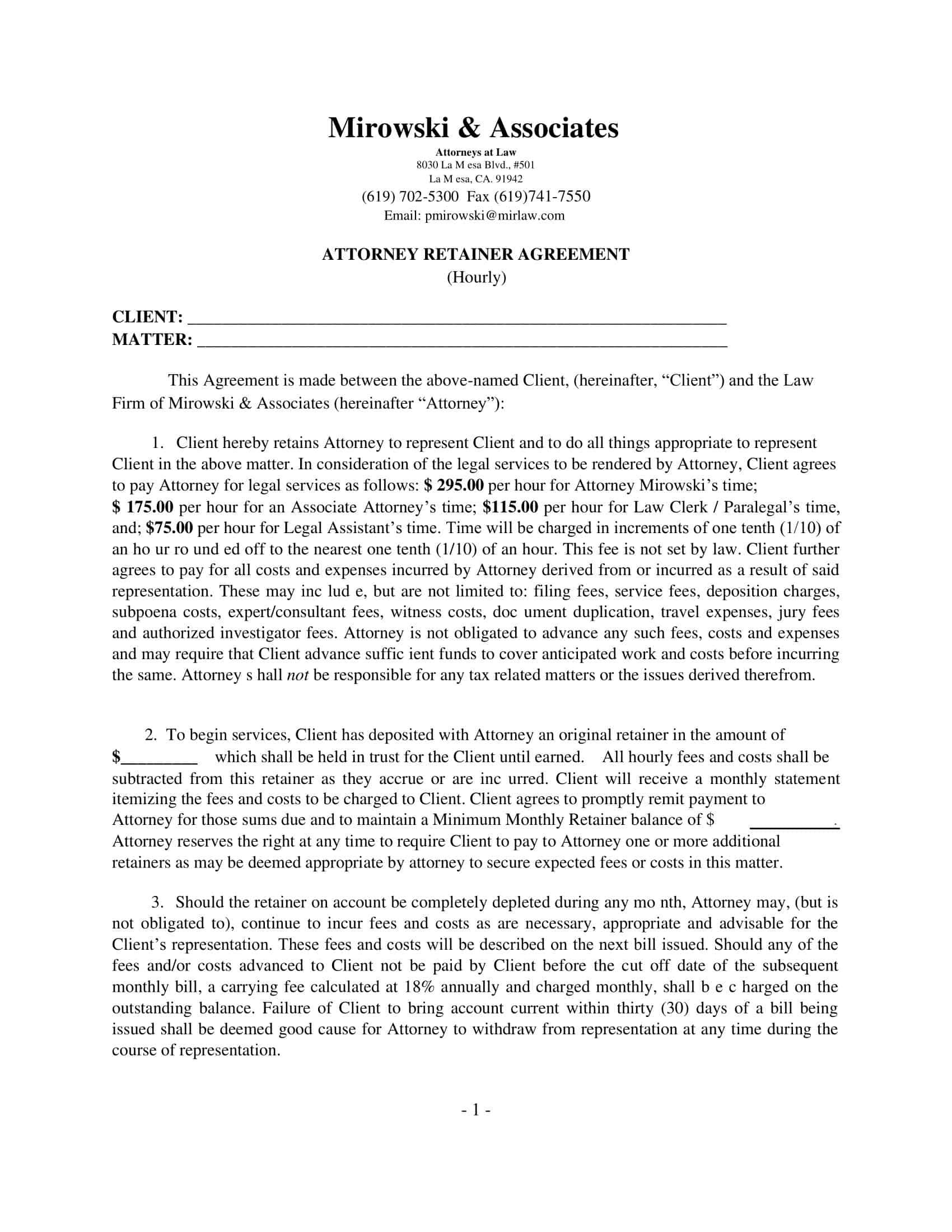

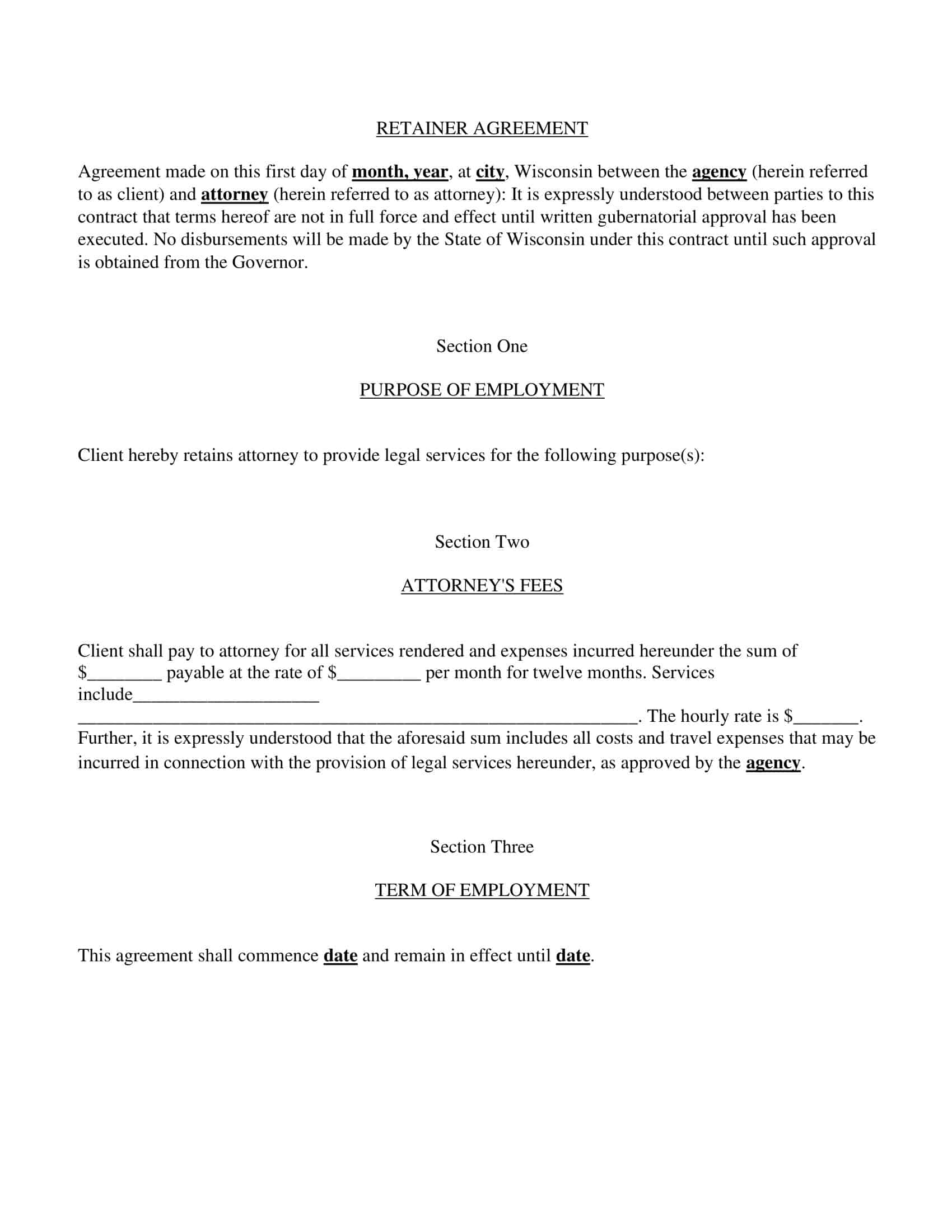


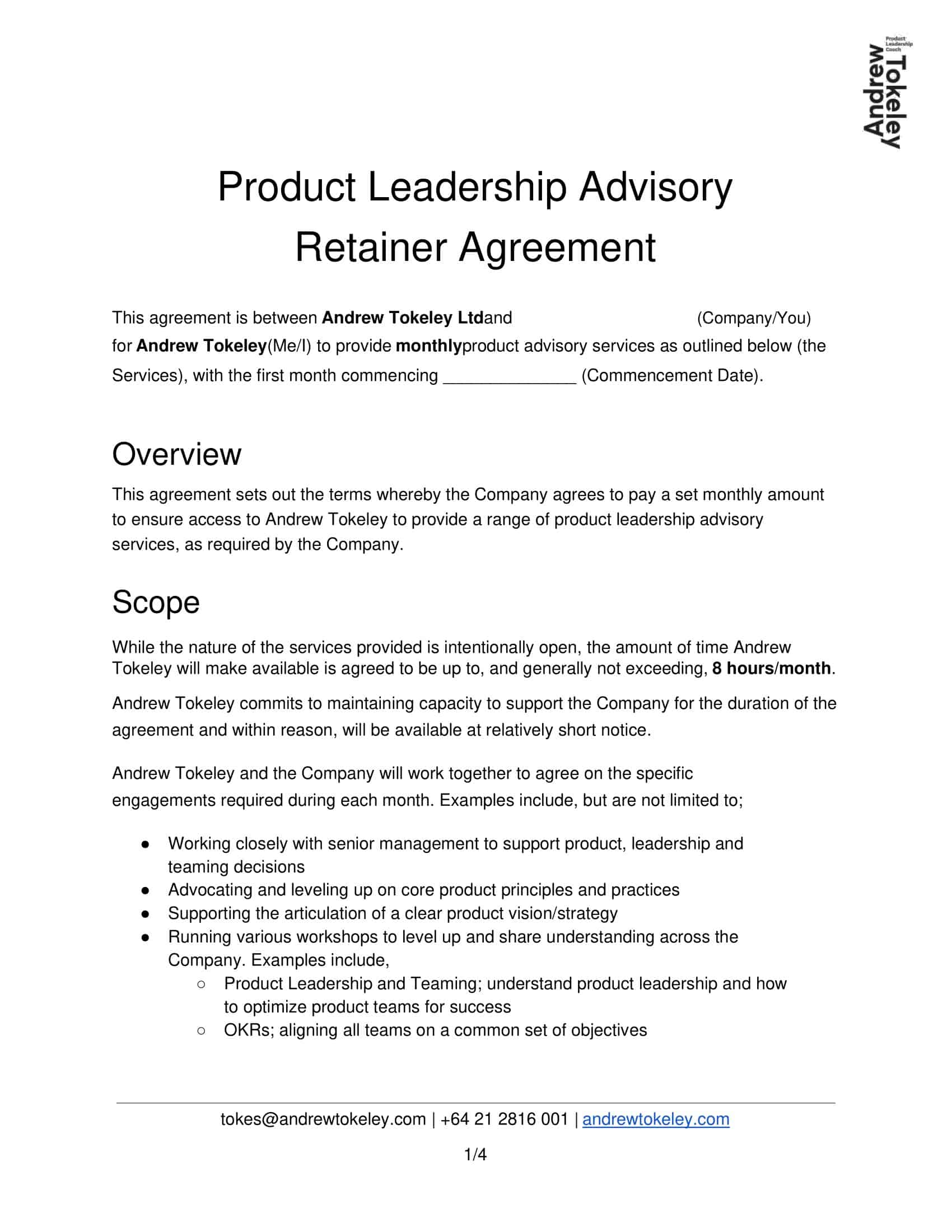


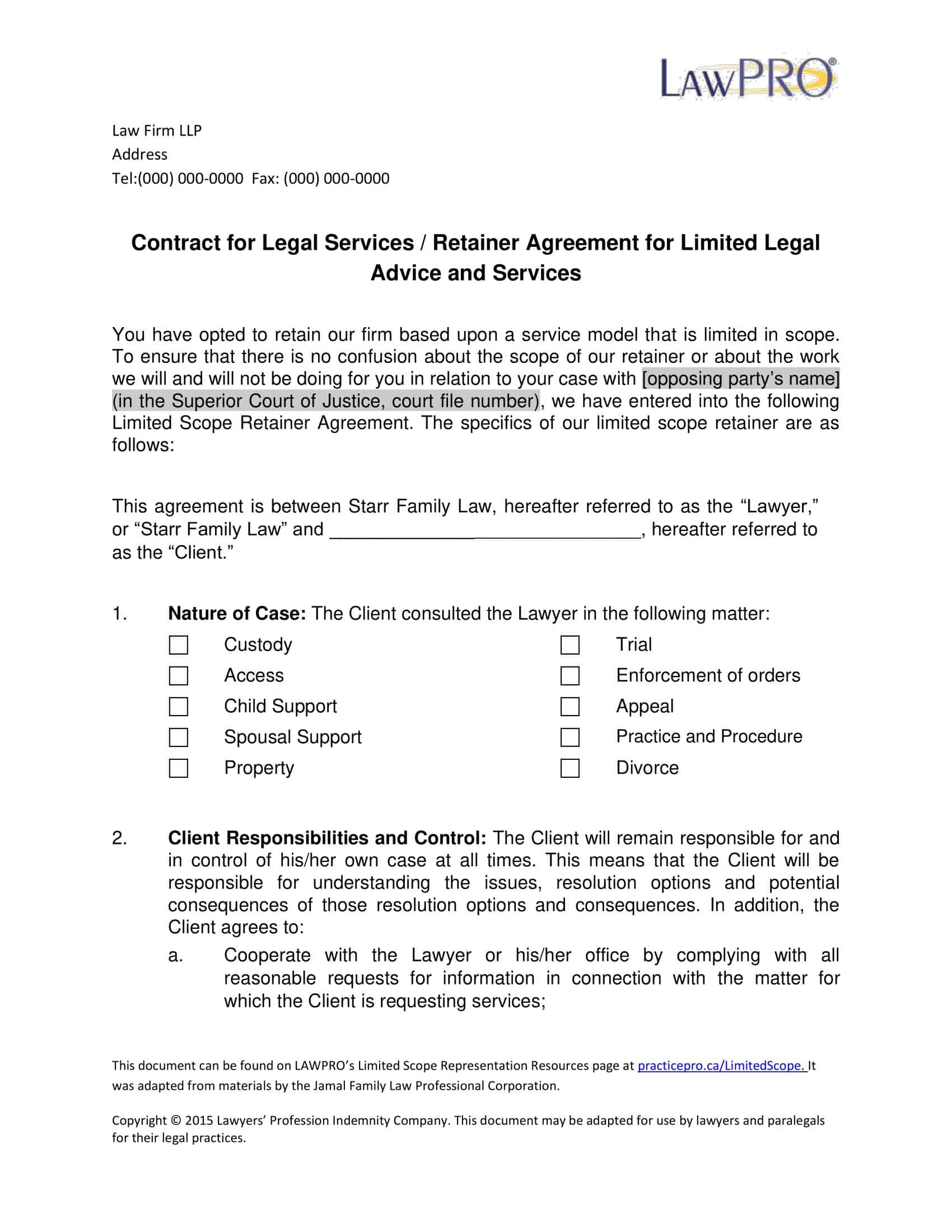

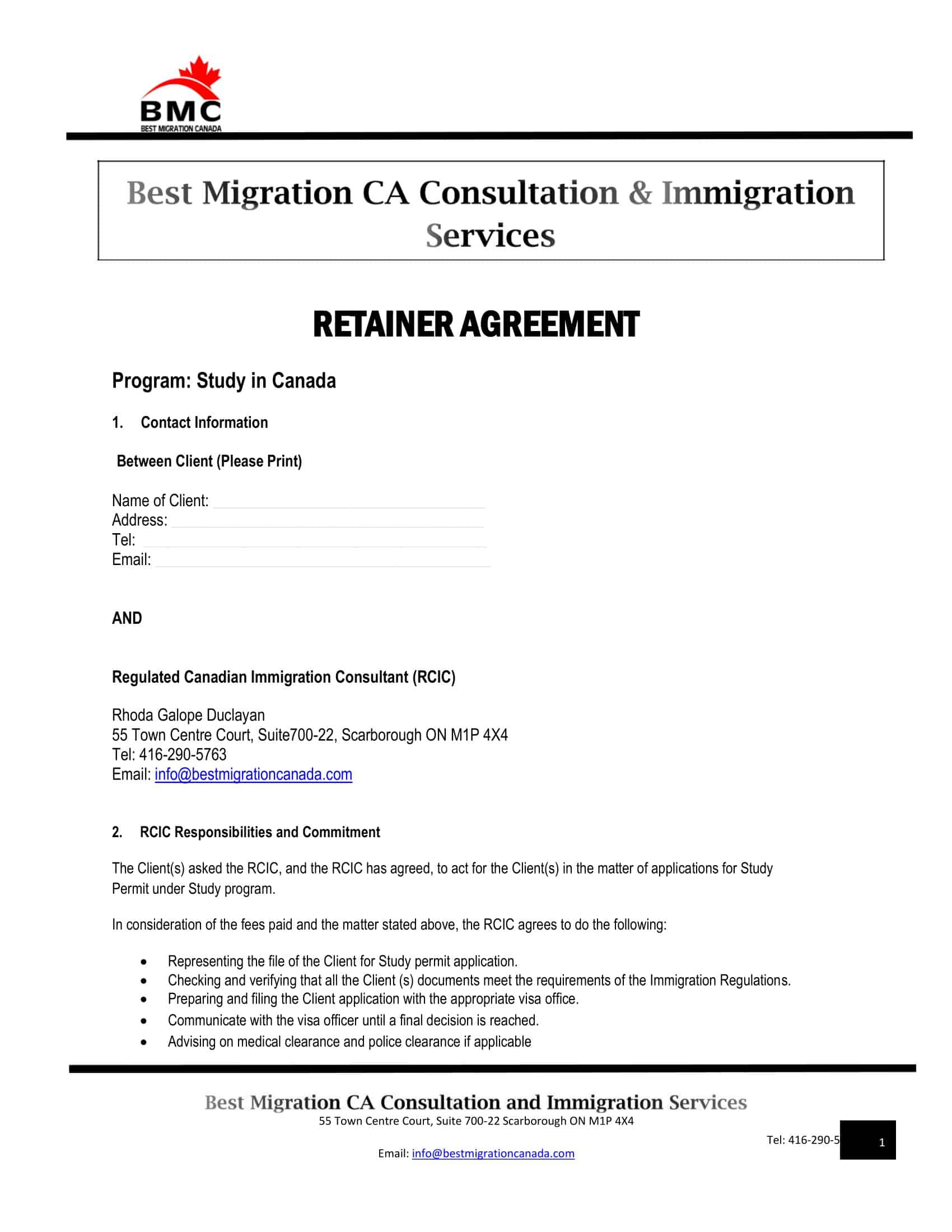







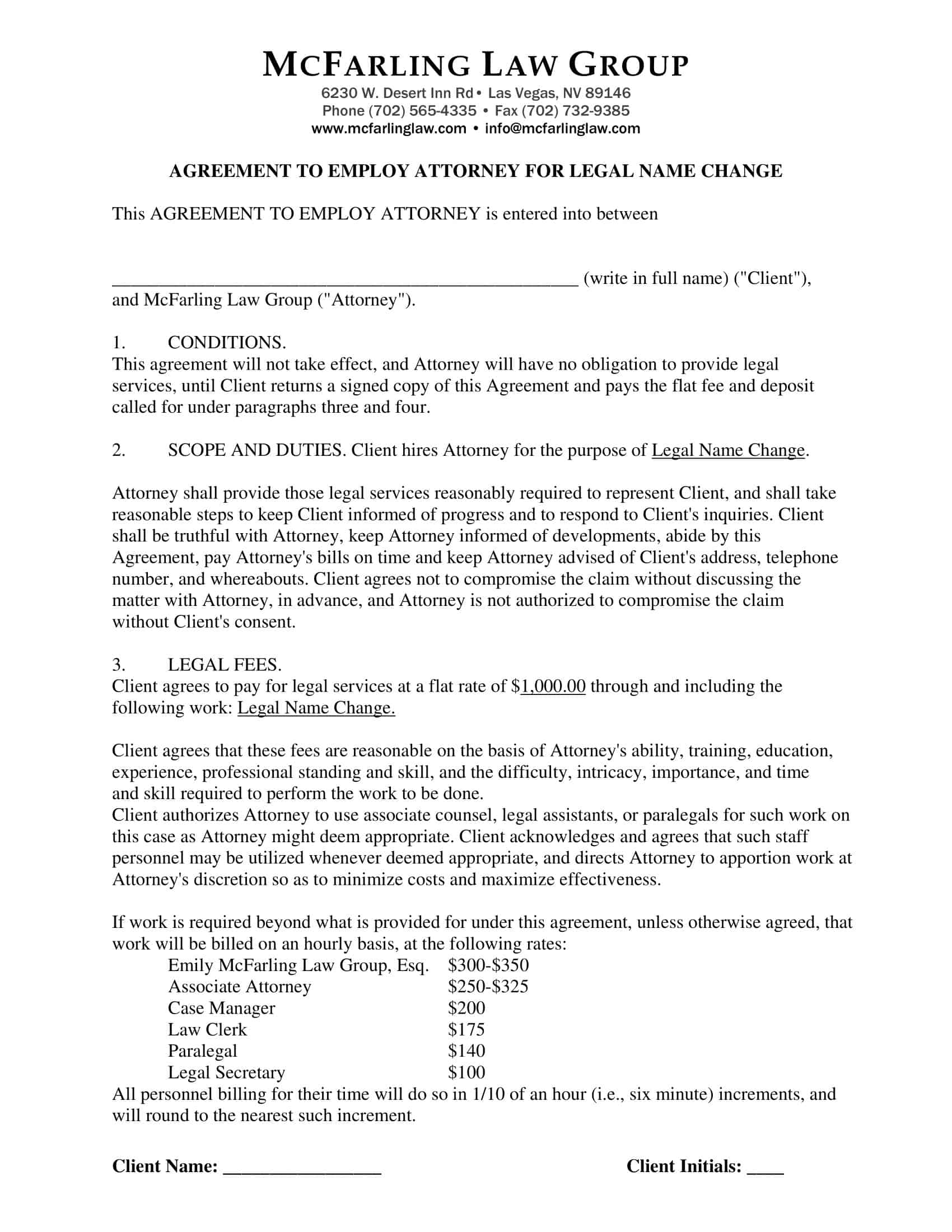




![Free Printable Roommate Agreement Templates [Word, PDF] 1 Roommate Agreement](https://www.typecalendar.com/wp-content/uploads/2023/06/Roommate-Agreement-150x150.jpg)
![%100 Free Hoodie Templates [Printable] +PDF 2 Hoodie Template](https://www.typecalendar.com/wp-content/uploads/2023/05/Hoodie-Template-1-150x150.jpg)
![Free Printable Payment Agreement Templates [PDF, Word] 3 Payment Agreement](https://www.typecalendar.com/wp-content/uploads/2023/05/Payment-Agreement-1-150x150.jpg)
